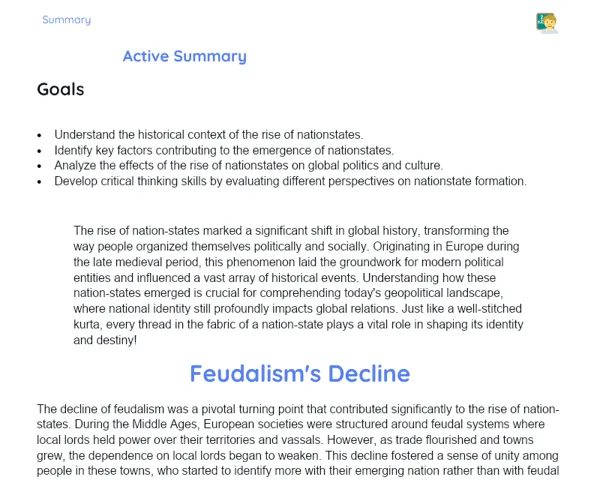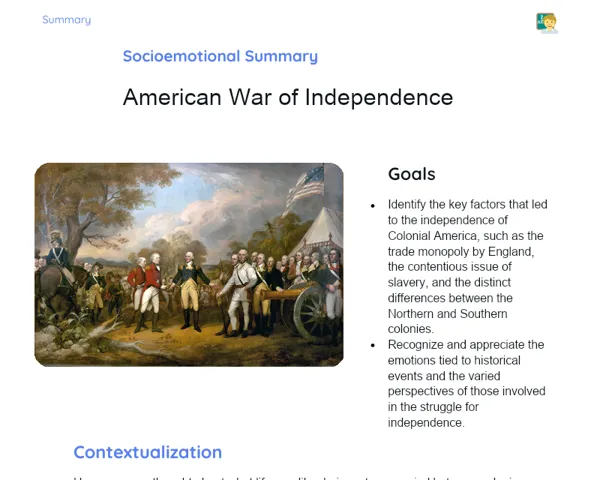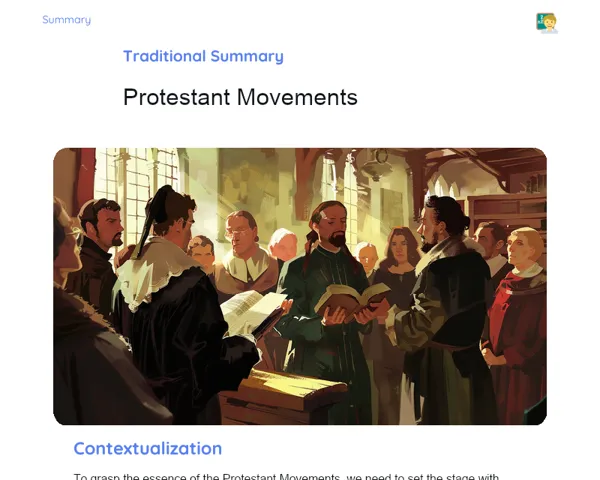Objectives
1. Analyze and understand the context and events that led to the Russian Revolution, focusing on the contributions and influences of Lenin and Stalin.
2. Explore how the Russian Revolution and its leaders impacted politics and movements both in India and across the globe.
3. Develop critical thinking skills to examine historical sources and interpret various viewpoints on the Russian Revolution.
Contextualization
Did you know that the Russian Revolution not only transformed Russia but also inspired similar movements in various corners of the world? Leaders like Lenin and Stalin are not only significant historical figures but also figures of debate, as their actions had far-reaching consequences. Studying this revolution provides insights not just into the past, but also into how ideas and actions can redefine nations and impact many lives.
Important Topics
Lenin and the October Revolution
Vladimir Lenin was the key figure behind the October Russian Revolution of 1917. As the leader of the Bolshevik Communist Party and the first head of the Council of People’s Commissars of the Soviet Union, Lenin pushed for the overthrow of the czarist regime to establish a government rooted in socialist principles as advocated by Karl Marx. His revolutionary actions not only altered the course of Russian history, but also inspired similar movements globally.
-
Led a strategic armed uprising against the provisional government that had taken over after Czar Nicholas II's abdication.
-
Implemented significant social and economic reforms, including land redistribution, workers' control of factories, and withdrawing Russia from World War I through the Treaty of Brest-Litovsk.
-
His leadership set the foundation for what would later become the Soviet Union, promoting a political economy based on state control of production.
Stalin and Soviet Totalitarianism
Josef Stalin took over leadership after Lenin and ruled the Soviet Union from 1924 until his death in 1953. Renowned for his oppressive policies and totalitarian rule, Stalin centralised power and instituted transformative policies that turned the Soviet Union into a major world power. His time in power was characterised by political purges, forced agricultural collectivisation, and rapid industrialisation.
-
Initiated the Great Purges, during which millions were executed or imprisoned in forced labor camps like the Gulag.
-
Executed forced collectivisation of agriculture, which led to widespread famine and resistance among peasants, fostering rapid industrial growth.
-
Under his regime, the Soviet Union emerged as a superpower, significantly influencing World War II and the Cold War.
International Impact of the Russian Revolution
The Russian Revolution had profound implications beyond Russia, igniting communist and anti-colonial movements worldwide. The establishment of the Soviet Union as a superpower and the ensuing Cold War dramatically affected global relations throughout the 20th century.
-
Inspired communist and anti-imperialist struggles in countries like China, Cuba, and Vietnam, which sought to follow the Soviet example.
-
The rivalry between the Soviet Union and the United States during the Cold War created global tension and sparked an arms race, shaping the policies of numerous nations.
-
The cultural and political influence of the Soviet Union spread through tactics like propaganda, support of communism abroad, and a vast network of treaties and alliances with countries worldwide.
Key Terms
-
Russian Revolution of 1917: A series of events in Russia that led to the overthrow of the czarist government, resulting in a socialist government led by the Bolsheviks.
-
Communism: A social and economic system aiming for collective ownership of production and the elimination of class distinctions.
-
Gulag: A system of forced labor camps in the Soviet Union, primarily used for repressing political dissenters and individuals viewed as 'socially dangerous.'
-
Cold War: The period marked by political and military tensions between the communist and capitalist powers, notably the Soviet Union and the United States, following World War II.
For Reflection
-
What were the effects of Lenin's and Stalin's radical policies on the Russian populace and the stability of the Soviet state?
-
How did the Russian Revolution and the subsequent formation of the Soviet Union shape political movements in other nations?
-
What are the similarities and differences in the views of Lenin and Stalin regarding communism, and how did these perspectives influence their policies?
Important Conclusions
-
We examined the dynamics surrounding the Russian Revolution, particularly focusing on Lenin and Stalin, and how their actions influenced not just Russia, but the world.
-
We scrutinised the policies and strategies employed by Lenin and Stalin, recognising their roots in communist ideology, while also acknowledging the authoritarian impacts and necessary critiques.
-
Understanding the Russian Revolution and its international consequences is vital for grasping historical narratives and the complexities of ideological implementation.
To Exercise Knowledge
Create a fictional diary entry from the perspective of a common Russian citizen experiencing life under Lenin and Stalin's rule. Detail how their life evolved over the years, highlighting historical events, governmental policies, and social repercussions. Use your imagination to express the emotions, hurdles, and adaptations of this character.
Challenge
Ideology Debate: Organize a class debate where half of the students will advocate for Lenin's ideologies while the other half will defend Stalin's. Prepare arguments based on their respective policies and engage in a discussion to persuade classmates on whose leadership was more advantageous for Russia and the global community.
Study Tips
-
Utilize concept maps to relate the events of the Russian Revolution to their causes and outcomes, helping visualize the connections between them.
-
Watch documentaries or historical films about the Russian Revolution for a clearer view of the events and societal conditions, which can aid in understanding and retention.
-
Engage in online or group discussions about world history to share insights and perspectives with peers, enriching your grasp of the topic and discovering diverse viewpoints.



